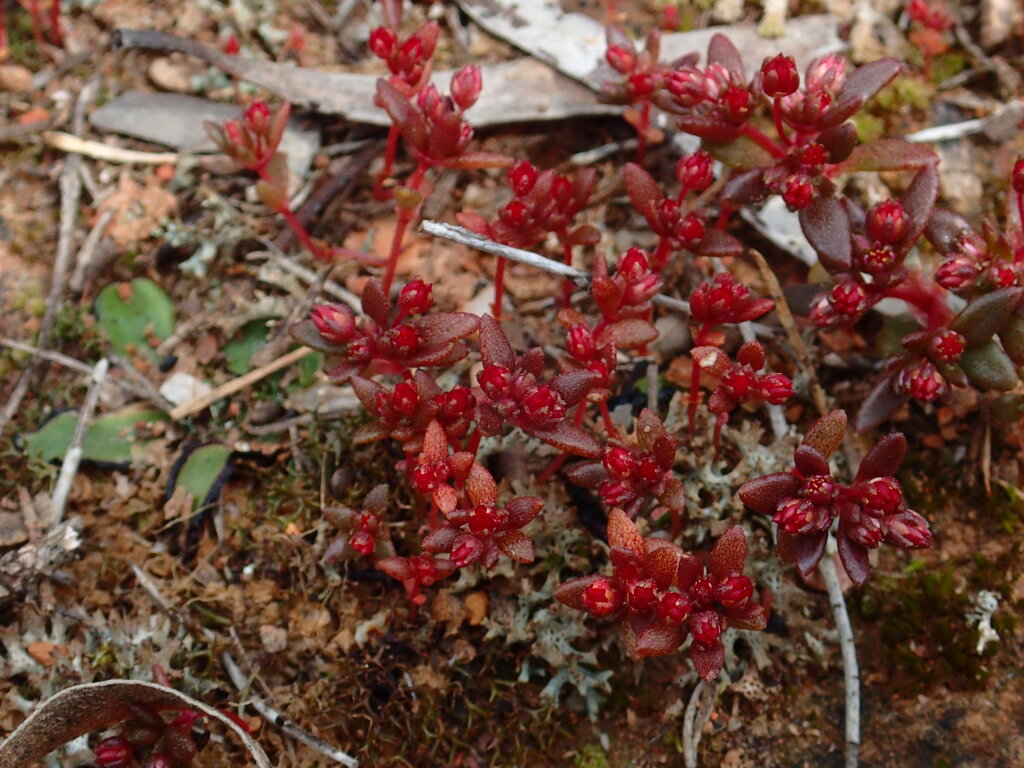Crassulaceae
Herbs or shrubs, usually succulent and with soft-wooded branches, biennials or geophytes (not in Australia). Leaves opposite or alternate, simple (rarely pinnatifid), without stipules, rarely petiolate. Inflorescence a thyrse with few-many dichasia often variously modified. Flowers actinomorphic, usually bisexual, (3–)5(–12)-merous; calyx persistent; corolla rotate to tubular, persistent; stamens as many or twice as many as petals, anthers 2-locular, introrse to lateral; nectary scales on outer base of each carpel; ovary superior, carpels free or almost so, 1–many ovulate. Fruit of follicles, splitting along suture but usually poral, persistent or deciduous; seeds with straight embryo and little or no endosperm.
35 genera and 1500 species but numbers vary greatly with the authority followed; cosmopolitan with particular concentrations in warm dry regions of Africa and Central America; 2 native genera but mainly Crassula commonly found in temperate Australia, 6 genera naturalized.
Toelken, H.R.; Jeanes, J.A.; Stajsic, V. (1996). Crassulaceae. In: Walsh, N.G.; Entwisle, T.J., Flora of Victoria Vol. 3, Dicotyledons Winteraceae to Myrtaceae, pp. 542–555. Inkata Press, Melbourne.
 Spinning
Spinning


